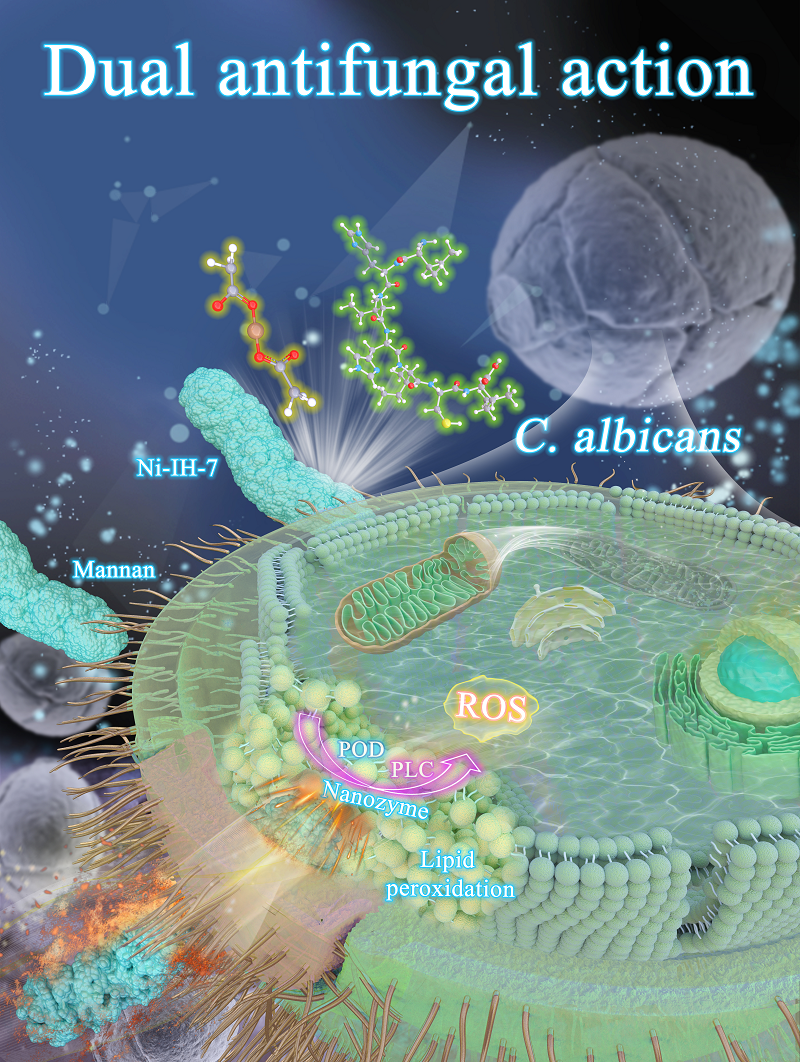Scientists Develop Dual-functional High-efficiency Antimicrobial Nanozyme
A research team led by Prof. GAO Lizeng from the Institute of Biophysics, Chinese Academy of Sciences, proposed a bactericidal mechanism based on nanozymes simulating antimicrobial peptides (AMPs) and antimicrobial enzymes (AMEs) according to biomimicry principles, and designed a dual-functional high-efficiency antimicrobial nanozyme. This work was published in Nature Communications on July 5, 2024.
Starting from the rational design of multi-peptide nanozymes, based on the key amino acids in the active sites of AMPs and AMEs, including histidine and cysteine, and combining peptide self-assembly and metal coordination principles, utilizing various computer methods such as Alphafold2, molecular dynamics simulation, and density functional theory, a group of 7-peptide sequences IHIHICI was optimized and selected. The nanozyme (AMPANs) formed by self-assembly possesses both AMPs and AMEs functions, demonstrating specific and efficient fungicidal effects.
The researchers selected Ni(Ac)2-assembled peptide nanotubes (Ni-IH-7) as the research object. Enzymatic studies showed that Ni-IH-7 has phospholipase C-like activity and peroxidase-like activity. Moreover, due to the formation of a stable secondary structure nanotube, Ni-IH-7 peptide nanozyme exhibited good tolerance to various hydrolytic enzymes.
Furthermore, the researchers found that the Ni-IH-7 peptide nanozyme could selectively bind to the mannoprotein on the surface of Candida albicans, inducing lipid peroxidation leading to iron death and hydrolysis of glycerophospholipids, thus rapidly killing the fungi. In vitro colony smear plate experiments on vaginal discharge from patients with vaginitis confirmed that the Ni-IH-7 peptide nanozyme had good antifungal effects and the bactericidal performance was not interfered by other substances in the secretions.
This study is the first to propose the strategy of combining antimicrobial peptides with nanozymes, designing and synthesizing peptide nanozymes from scratch through computer simulation, and systematically studying their specific mechanism for killing fungi, providing insights for the development of novel antimicrobial drugs.

Fig. Antibacterial mechanism of Ni-IH-7 peptide nanozyme
(Image by GAO Lizeng's group)
Article link: https://www.nature.com/articles/s41467-024-50094-6
Contact: GAO Lizeng
Institute of Biophysics, Chinese Academy of Sciences
Beijing 100101, China
E-mail: gaolizeng@ibp.ac.cn
(Reported by Prof. GAO Lizeng's group)

